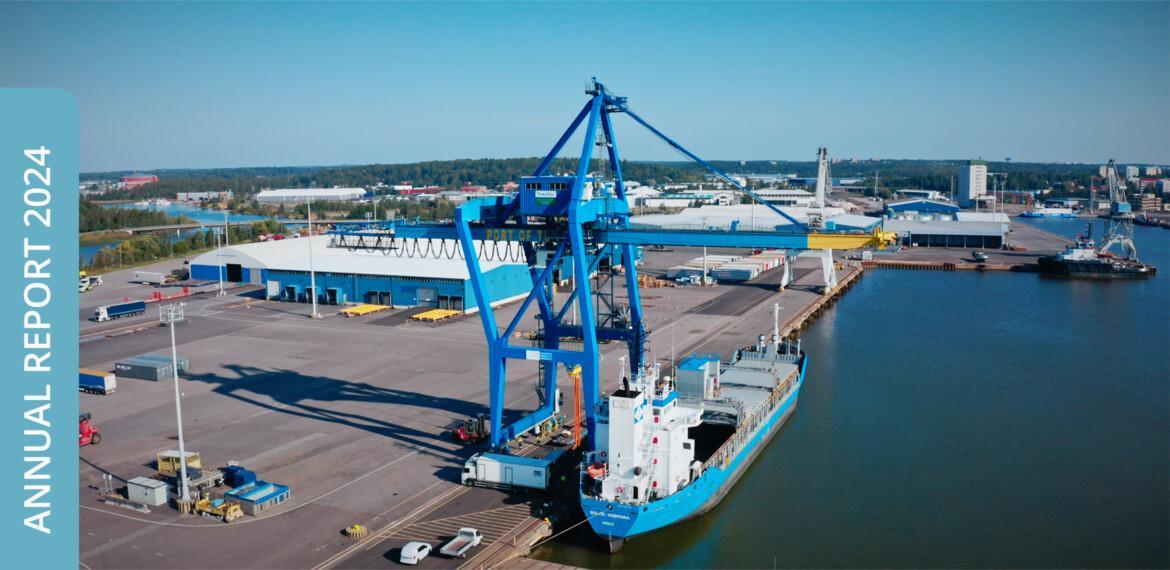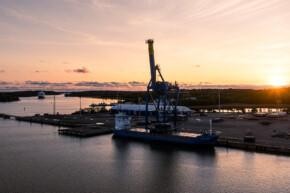The Port of Turku has a clear direction for the future
The Port of Turku serves as Finland’s primary hub for Scandinavian traffic and an important logistic link for Finnish industry over the Baltic Sea to Europe and across the ocean to far-off countries. The core task of Port of Turku Ltd is to ensure that passengers and cargo are transported from port to port on time, safely, flexibly and efficiently.

The operations of the port company are guided by customers’ needs and expectations, sustainability and a goal-oriented approach, both in everyday activities and through the development of our services.
An updated strategy as a foundation for business
The Port of Turku’s operations are being carried out on the basis of an updated strategy for 2025–2030. The aim of the strategy is to ensure that the port is able to respond to changes in the operating environment and to new requirements concerning operations in the harbour. The strategy document will be reviewed annually and updated to reflect the operating environment as needed.
The aim of the strategy is to achieve profitable growth and sustainable development in select business areas, which include passenger traffic, cargo traffic and logistics. Our mission is to generate the best conditions for business activities in these sectors, both in terms of maritime transport and the services that support it. We want the Port of Turku to be best known as a service-oriented, modern and safe harbour that is a vital part of maritime Turku.
The new strategy applies to all port functions
The updated strategy will be reflected in many ways in the operations of the port. The increase in commercialism signifies growth in activity and a rapid response to the opportunities presented by the market. Clarifying the operational culture strengthens the activities of the port organisation and co-operation with customers and stakeholders. All operational functions of the port prioritise the requirements for sustainable development, security of supply and safety.
A clear implementation plan has been drawn up to realise the strategy and the process will be followed up using comprehensive indicators and monitoring.
The port brings added value
The operations of the Port of Turku bring added value to our customers as well as to the surrounding society. It strengthens the operating conditions for business in the Turku region and, also on the national level, offers flexible and cost-effective solutions for both maritime transport and storage. The short, fast route to Sweden and timetables that suit freight traffic facilitate transport planning, and the uncongested road connections save time. Flexibility and the port’s ability to quickly solve potential problem situations also add significant value.
The port is a vital source of value for Turku and the entire city region as well. Travellers using the port strengthen the flow of customers for the trade and service sectors and spread awareness of Turku. The port also plays a role in the organisation of events such as the Tall Ships Races.
The operating environment is constantly changing
The operating environment of the port has undergone major changes in recent years. The environmental requirements for port operations and shipping have intensified, but the Port of Turku has largely been ready to meet these requirements for some time now. Numerous decisions have been made by the port that will reduce the environmental impacts of its functions, and further reductions are still to come. The most recent of these include the commitment to carbon neutrality by 2030 and the co-operation to create a green transport corridor between Turku and Stockholm by 2035.
As regards digitalisation, the Port of Turku is at the forefront of the industry. The use of positioning and mobile technologies facilitates the functioning of the entire transport chain. Digitalisation is utilised not only in the weighing, measuring and imaging equipment of heavy-duty transports, but also for the identification of vehicles and driving guidance for entering the ships. Automation and robotisation improve cargo handling and enhance occupational safety in the port. One example of this is the automatic mooring and unmooring equipment used at the Viking Line pier.
The concrete operating environment of the port will be most affected by the construction work inherent to the Ferry Terminal Turku project in the coming years. The construction work, which was initiated at the beginning of 2025, will continue until the turn of 2026–2027 and will require changes to the port’s traffic arrangements at different stages. The process should not, however, cause any interruptions to the active ship and connection traffic.
The construction of the new passenger terminal will accelerate urban development in Turku and help to promote, for example, the Linnanniemi area. The aim is to create a seaside, lively and functional area around Turku Castle for the benefit and joy of tourists and residents alike. Once completed, the architecturally distinguished terminal building will serve as Turku’s maritime landmark, a reminder of the 870-year history of the Port of Turku.
Text: Kari Ahonen
Photo: Valote

